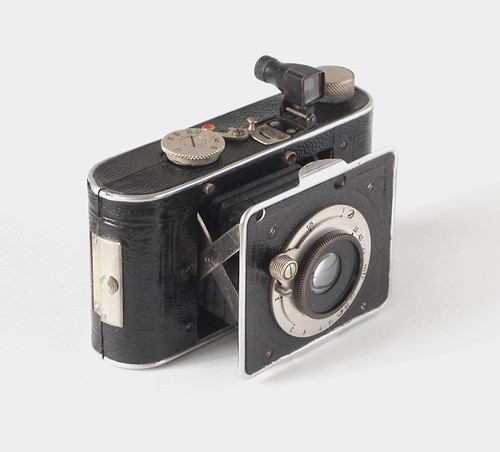 |
| Foth Derby with f3.5 Foth Anastigmat lens |
The
Foth Derby is a strut-folding camera for
127 film produced by C.F. Foth of Berlin during the 1930s. Unusually for compact cameras of that date, it features a
focal plane shutter with speeds of 1/25th-1/500th of a second, and 'B'. The camera pictured above is a type 2 Derby, with a Foth Anastigmat f3.5 lens, self timer and telescopic viewfinder.
I bought the camera 'as is' from a certain auction site, and it arrived in working condition, but in need of a little repair. The shutter comprises two cloth curtains, one of which had deteriorated. This was more than just a few pinholes, so I decided to disassemble the camera to see if I could remedy the problem.
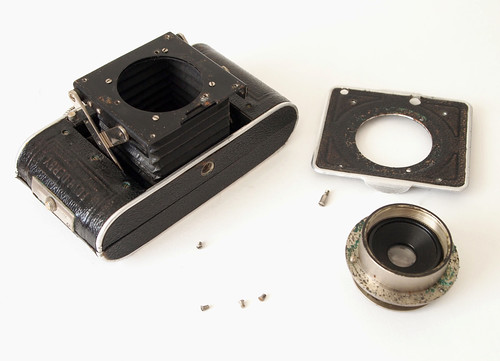 |
| Camera with lens and lensboard removed |
The first step was to remove the lens, held by three screws including the long focus stop. The lens was relatively clear, and I simply separated the front and back elements for a light clean. I then removed the lens board, held on by four screws. Once the lens had been removed, it was easier to see the condition of the shutter curtains. From the front of the camera, the surface of the shutter cloth was cracked; held up against the light there were lots of pinholes. The other curtain which covers the film when the shutter is cocked was fine: possibly without a lens cap, light through the lens caused the deterioration of the one curtain, the other being rolled out of the way.
 |
| Close up showing the cracked surface of the coating on the inside of the cloth shutter curtain. |
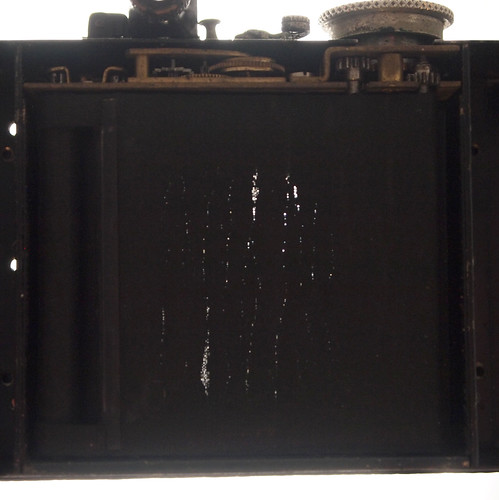 |
| Pinholes in the shutter curtain seen against the light |
I thought that the four screws that can be seen through the front of the camera might enable me to remove the shutter, but these screws hold the bellows to the shutter. Opening the back of the camera, I removed the spool holders to either side, then from the front of the camera, I unscrewed the six screws either side of the bellows, covered by the lensboard with the lens collapsed. These six screws hold the film gate and rollers around the shutter unit. Having removed this, the shutter unit was still held to the camera body by something. This was the self-timer, secured with a screw through the top plate into the shutter. Having unscrewed this I could remove the shutter.
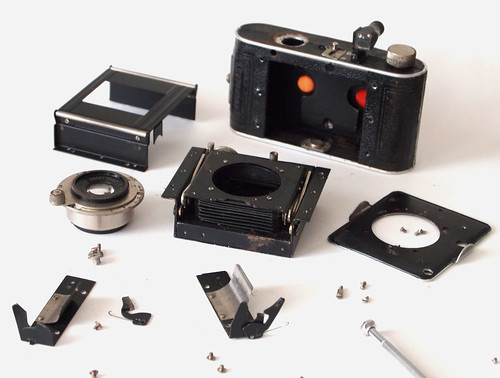 |
| Foth Derby disassembled |
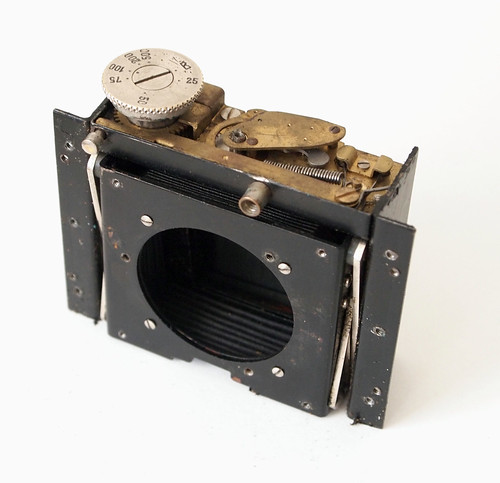 |
| Foth Derby shutter unit |
With the film gate removed, the whole of the shutter curtain was exposed. The next stage of disassembly would have been to remove the shutter curtains; however I wanted to attempt a repair without doing this if possible. For the repair I used black acrylic paint, thinned with water to the consistency of milk, which I thought would be flexible enough for occasional use. The paint was applied to the back of the curtain, i.e. on the other side of the fabric from the cracked surface, which I left as it was. There were so many holes it was simpler to paint the whole surface of the curtain. One coat of paint left some holes visible against the light, and I gave the cloth another three coats. Once the paint was dry, the shutter curtain appeared to be flatter than before, presumably the fibres of the cloth swelled with the moisture from the paint, then tightened in the process of drying.
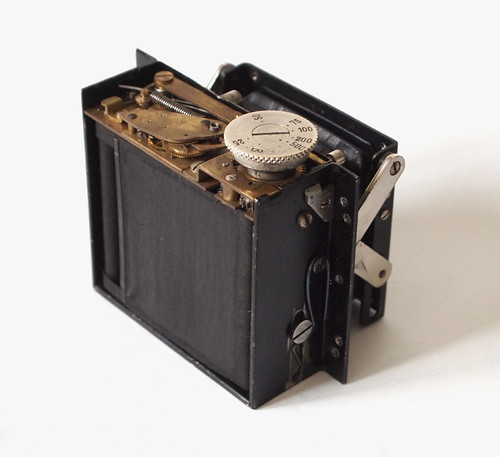 |
| Shutter repaired with acrylic paint |
I polished both the metalwork and the leather while the camera was disassembled after gluing down some of the leather, which was peeling, and the light seals inside, then put it back together after leaving it overnight as a precaution against the fumes from the glue and polish affecting the shutter mechanism, lens or anything else.
Foth Derby continued






